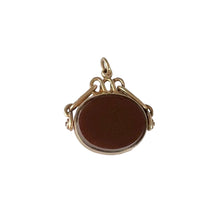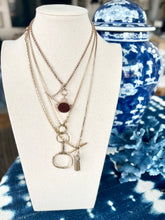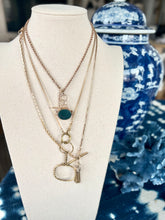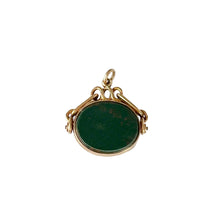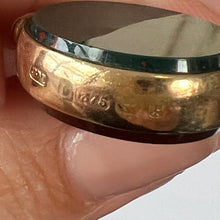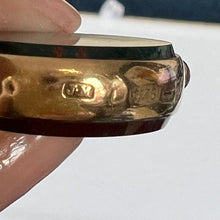Victorian Yellow Gold 9K Swivel Spinner Fob, Carnelian & Bloodstone
Regular price
$495.00
Sale
Victorian 9K Swivel FobPendant, Carnelian & Bloodstone part of our fine jewelry series, this yellow gold swivel is a desirable collectors piece that will add fabulous character to your charm collection. The beautiful link and loops designed bail swivels beautifully. This piece bears the 9K stamp with the Birmingham assay mark P indicating it was made in 1889.
A unique piece to begin or add to your collection! Wear it alone or layer with other pieces to create a dramatic statement piece.
Shown on a chain for display purposes only, each piece is sold individually so that you can customize your own collection
A few minor dings and scratches from wear typical for age and use.
• Please view all photos for condition, as our opinion may differ from yours.
• Please see our shop policies on returns, exchanges & shipping.
• Please pay close attention to item descriptions and if you have questions about a selection, PLEASE message us & we will be glad to help!
Please visit our online shop www.luxecurations.com for more exciting new, vintage and antique jewelry decor and accessories!
Contact us for information regarding a personal styling appointment in house or we come to you. Call or text 646.946.9404 or melissa@luxecurations.com
ERA: Victorian c.1889
DIMENSIONS: 1.33" L x 1.33" H x .25" D
MATERIALS: 9K yellow gold, spice colored carnelian and freckled forest green bloodstone
STAMPS & HALLMARKS: "JM" makers mark, '9'.375, Birmingham assay, date letter P for 1889 on the bottom of the fob, '9', '.375' on the link at the top
FACTS & HISTORY: The word “fob” comes from the German word “fobke” or “fuppe” which means “small pocket”. A fob would refer to the chain or cord attached to a pocket watch. The term went on to describe any small object such as a medallion, charm, or ornament attached to a pocket watch or key.
Until World War I and the development of the wristwatch, most watches designed for men had to be carried in the pocket. About 1772 the fashion of carrying a watch in each waistcoat fob pocket was introduced (though one watch was usually false); watch fobs consisted of chains supporting seals.
Fobs and seals decorated the waists of fashionable men during the early nineteenth century, continuing a trend that started in the late eighteenth century. Fobs were short straps, ribbons, tassels, or chains. Men usually carried their watch in a small pocket on the waistcoat, called a fob pocket. Around 1775, waistcoats had several pockets, and for a time it was fashionable to carry a watch in each pocket. Sometimes only one watch was functional, while the others were merely decorative. The fobs hanging from each pocket became quite elaborate, and small personal seals were often attached to the free end.
As chain-style fobs began to be made of jewelry quality metal such as gold, silver, or even platinum, they began to be called watch chains or fob chains. These were valuable objects in themselves. During the Victorian period, fob chains of human hair were quite popular. Many Victorian wives were happy to braid a lock of their own hair into a fob for their husband’s prized watch.
The excavation of ancient sites in Pompeii, Herculaneum, and Egypt in the mid 1700s influenced art, jewelry and fashion from Italy to England. Carved jasper, onyx, carnelian and shell became popular with the revival of Classical themes. When Napoleon placed ancient Roman cameos on his 1804 coronation crown, he began a trend that has continued to the present day.
The excavation of ancient sites in Pompeii, Herculaneum, and Egypt in the mid 1700s influenced art, jewelry and fashion from Italy to England. Carved jasper, onyx, carnelian and shell became popular with the revival of Classical themes. When Napoleon placed ancient Roman cameos on his 1804 coronation crown, he began a trend that has continued to the present day.
Greek, Roman, and Etruscan symbols including serpents, crescents, carved stone signets and mythological gods appeared in jewelry from 1830 - 1920s.
The popularization of photography by the 1880s and 90s resulted in the addition of keepsake photos to watch fobs.
And of course the delight of miniaturization was another wonderful trend - resulting in tiny treasures like working compasses.








